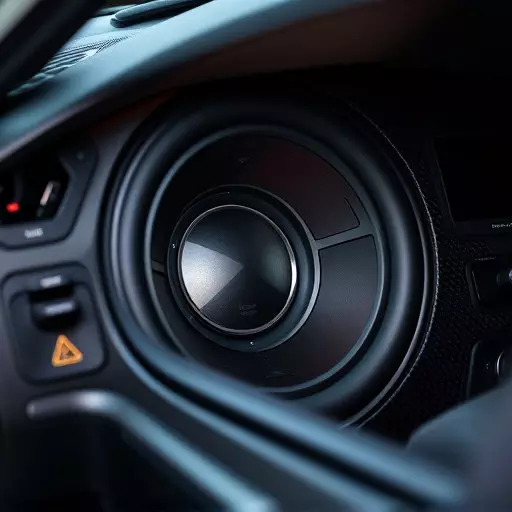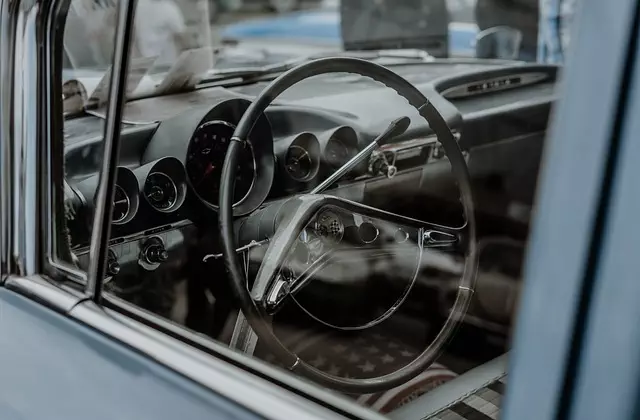A successful car audio system tune-up in Toledo requires understanding and balancing the interactions between amplifier, speakers, head unit, and wiring. DIY projects involve testing signal strength, distortion, and frequency response, then equalizing bass and treble using specialized equipment. Professional services use advanced tools for precise tuning, assessment of discrepancies, and optimization of sound quality, ensuring an elevated driving experience through tailored frequencies and components like equalizers and crossovers.
In today’s digital era, optimizing your car’s audio system is more than just enjoying your favorite tunes. It involves navigating a complex web of components—from amplifiers to speakers—that interact to deliver immersive sound quality. This article guides you through the intricacies of car audio system tune-up in Toledo, whether as a DIY project or a professional endeavor. We explore common challenges, from understanding basic components to advanced strategies for maximizing sound quality, ensuring your automotive audio experience is truly remarkable.
- Understanding Car Audio System Basics: Components and Their Interactions
- Common Challenges in DIY Car Audio Tune-Up: A Step-by-Step Approach
- Professional Car Audio Tuning: Tools, Techniques, and Best Practices
- Advanced Strategies for Optimizing Sound Quality: Overcoming Unique Obstacles
Understanding Car Audio System Basics: Components and Their Interactions

Understanding the basics of your car’s audio system is a crucial step in achieving optimal sound quality during a car audio system tune-up in Toledo, whether it’s a DIY project or done by a professional. The system consists of several components that work together to deliver audio to the vehicle’s interior. These include the amplifier, speakers, head unit (radio), and various wiring and connectors.
Each component plays a vital role: the amplifier boosts the signal from the head unit, ensuring enough power reaches the speakers; speakers transform electrical signals into sound waves; the head unit acts as the control center, decoding audio sources and sending signals to the amplifier; while wiring and connectors ensure proper data and power transmission throughout the system. A well-tuned car audio system requires balancing these components’ interactions for harmonious sound reproduction, whether it’s for a diy car audio tune-up or a professional car audio tuning service.
Common Challenges in DIY Car Audio Tune-Up: A Step-by-Step Approach

Car audio system tune-ups can be a complex process, especially for those attempting DIY projects. One of the primary challenges lies in achieving balanced sound levels across all speakers—a crucial aspect of optimal listening experience. Many enthusiasts struggle with equalizing bass and treble to each speaker, which requires precise calibration using specialized equipment.
A step-by-step approach involves first identifying the current audio system’s strengths and weaknesses through testing. This includes measuring signal strength, distortion levels, and frequency response. Once data is gathered, adjustments can be made to settings within the car’s head unit or external amplifiers. Additionally, upgrading components like speakers and subwoofers can significantly improve performance. Professional car audio tuning services often employ advanced tools for precise tuning, ensuring a seamless blend of sound across all frequencies, ultimately elevating the overall driving experience in Toledo and beyond.
Professional Car Audio Tuning: Tools, Techniques, and Best Practices

Professional car audio tuning involves a meticulous process that requires specialized tools and expertise. The primary goal is to optimize the performance and enjoyment of a vehicle’s audio system, ensuring every component works in harmony. A professional tuner will begin by assessing the current state of the car audio system using advanced diagnostic tools. This includes analyzing the amplifier, speakers, head unit, and wiring for any discrepancies or damage. They might employ oscilloscopes, multimeters, and signal analyzers to gather precise data about the audio system’s output and identify areas for improvement.
Once the evaluation is complete, the tuner can begin fine-tuning each element. Techniques may include adjusting equalization settings to enhance vocal clarity and midrange response, optimizing bass levels to achieve a tight and controlled low-end without distortion, and configuring crossover networks to direct specific frequency ranges to the appropriate speakers. Best practices dictate using high-quality tools and components, as well as following manufacturer guidelines. Proper grounding and wiring techniques are essential to prevent signal interference and ensure the longevity of the audio system. Regular maintenance and updates based on new technologies also contribute to a seamless professional car audio tuning experience.
Advanced Strategies for Optimizing Sound Quality: Overcoming Unique Obstacles

Optimizing sound quality in a car audio system is an art, and for those who strive to achieve perfection, understanding advanced strategies is key. When it comes to DIY car audio tune-ups, many enthusiasts face unique challenges due to the dynamic nature of vehicles and their diverse acoustic environments. A professional car audio tuning service in Toledo, Ohio, for instance, leverages specialized equipment and expertise to navigate these obstacles.
One significant challenge lies in balancing the system’s response across different frequencies. Every car interior presents distinct acoustics, influenced by factors like seating, dashboard materials, and glass. Professionals use precise measurement tools to analyze these variables, ensuring a tailored approach. They adjust components like equalizers and crossovers to fine-tune the audio, delivering an immersive experience that resonates with the vehicle’s unique acoustic signature. This meticulous process goes beyond basic adjustments, delving into the intricate details that separate a good sound system from a truly exceptional one.


